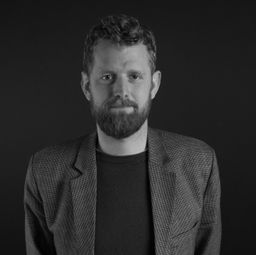Fixed typology, fluid functions, continuous narrative: Spacious and intangible narratives forming a new planning strategy in Vestbyen, a Danish working-class neighbourhood
Mon statut pour la session
Quand:
10:00 AM, Jeudi 1 Sep 2022
(20 minutes)
Où:
UQAM, pavillon J.-A. De Sève (DS)
- DS-R520
In addition to abandoned industrial complexes, deindustrialization left its working-class neighbourhoods in an identity vacuum. Since deindustrialization, the abandoned industrial complexes played and plays a crucial role in the market-driven development of the city; here conversion of complexes into cultural centres, apartments and offices serves as important factors in creating identity and attractive urban neighbourhoods. In this paper, I will argue for a new role of the working-class neighbourhoods in the city - as a counterstrategy to the market-driven city - as they content important social heritage and plays an important role in the mixed, social diverse and dynamic city.
The paper initiated from an understanding of our social, structural and intangible heritage as crucial to ensure communities and social balance in our cities and urban neighbourhoods - heritage is part of our self-understanding and perception of local communities (Bandarin & Oers 2015, Braae 2020, Jigyasu 2015). Thoughts, all in-line with recent years change in the view of heritage in planning, from monumental to an active and dynamic vector (Janssen et al. 2017). A change parallel to the general view of heritage as something created and understood relationally, as a continuum of time and space read in the physical objects - as all heritage is intangible (Fairclough 2009, Smith 2010).
In Vestbyen, a former working-class neighbourhood from late 19th century build in connection with the construction of cotton spinning mills in the Danish town of Vejle - a development giving the city its nickname, Denmark's Manchester – Vejle Municipality and Aarhus School of Architecture tested an approach for planning based on the heritage.
In the paper, I describe the approach to urban development, in working-class neighbourhoods, based on the use of cultural heritage - not as something to be preserved but as the premise for development. The paper describes an understanding of the planning ideals behind the working-class neighbourhood and in the surrounding neighbourhoods - what can we learn from the development of ideals and approaches in the planning of Vestbyen. How can an understanding of the urban heritage in a working-class neighbourhood reconnect the social and functional mixed city?
The used method was explorative and based on mappings and valuations done by locals through interviews and questionnaires, and by students of Aarhus School of Architecture by registrations. By comparative analysis of the different mappings and valuation, we formed an understanding of the relational contexts and a multifaceted perspective on how to read the heritage of the neighbourhood from both a social and an architectural perspective - understanding the dynamics and narratives. We combined the non-monumental architecture with the use during history and today forming an approach based on both the physical and the social (intangible), recognizing the dynamic relationship between historic objects and their broader environment and to the people who shape and use them. Theoretically, the approach takes its starting point in Actor-Network Theory, which are included throughout the article as a framework for understanding both the theoretical and methodological approach in the project.
The aim of this paper is to explore the potential of using both a social and architectural perspective on cultural heritage in the planning process, initiated through mappings, questionnaires and valuations, to ensure a continuing role of the working class neighbourhood in the city. A continuum of time, space, and social diversity with a mix of work (entrepreneurship) and functions.
